Queen Camilla's Coronation Consort Ring May Cost More Than King Charles's
- Oops!Something went wrong.Please try again later.
- Oops!Something went wrong.Please try again later.
- Oops!Something went wrong.Please try again later.
- Oops!Something went wrong.Please try again later.
"Hearst Magazines and Yahoo may earn commission or revenue on some items through these links."
The Crown Jewels play an important and symbolic role in the coronations of British monarchs. The coronation regalia—which includes sacred objects like St Edward's Crown, sceptres, and swords dating as far back as centuries into the past—represent the monarch's powers and responsibilities. When they're not in use, they are safeguarded in the Tower of London.
As the United Kingdom prepares for its first coronation in 70 years, read ahead to brush up on what coronation regalia you can expect to see during the May 6 ceremony for King Charles III and Queen Camilla.
The Ampulla and the Coronation Spoon
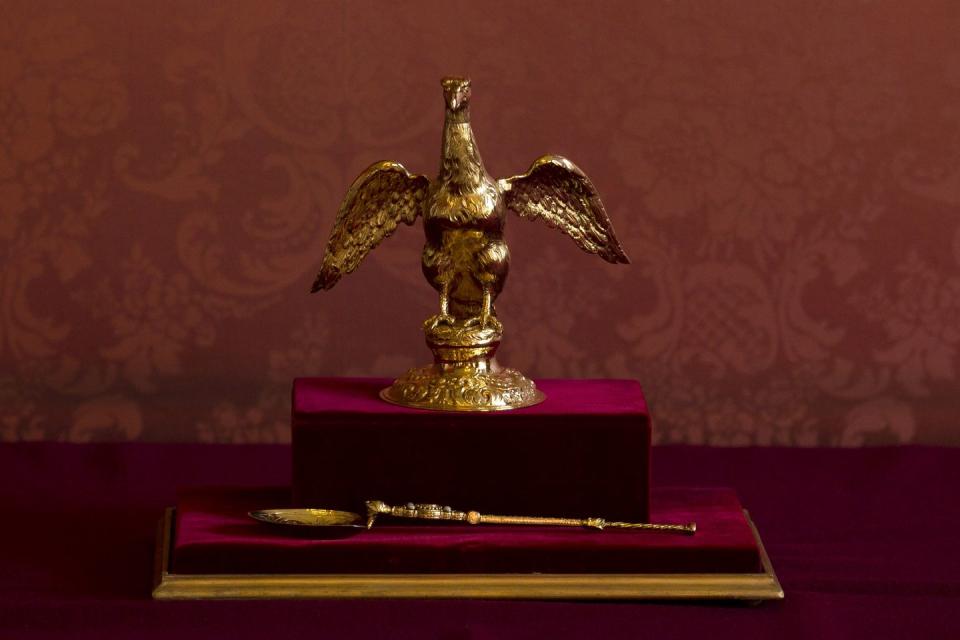
During the coronation, the Archbishop of Canterbury will anoint King Charles and Queen Camilla with holy oil via the Ampulla and the Coronation Spoon.
The Ampulla is made from gold and cast in the form of an eagle with outspread wings; the consecrated oil is poured through its beak. It was originally created for the 1661 coronation of King Charles II.
Meanwhile, the silver-gilt Coronation Spoon is the oldest object among the coronation regalia, dating back to at least 1349. It is also the only ever piece of Royal goldsmiths' work to survive from the 12th century, since it once potentially belonged to King Henry II (1133-1189) or King Richard I (1157-1199).
Maces
Two maces will be in use at the May 6 coronation. These maces, which date back to the 17th century, are made of silver gilt over oak. Buckingham Palace notes that they "are the ceremonial emblems of authority which are carried before the Sovereign at events such as the State Opening of Parliament."
Swords
The Sword of State
The Sword of State was made some time during the reign of 17th century reign of King Charles II. It includes a steel blade with a silver-gilt hilt, enclosed in a wooden scabbard covered in velvet and bearing King William III's coat of arms. It was previously used at the 1969 Investiture of The Prince of Wales.
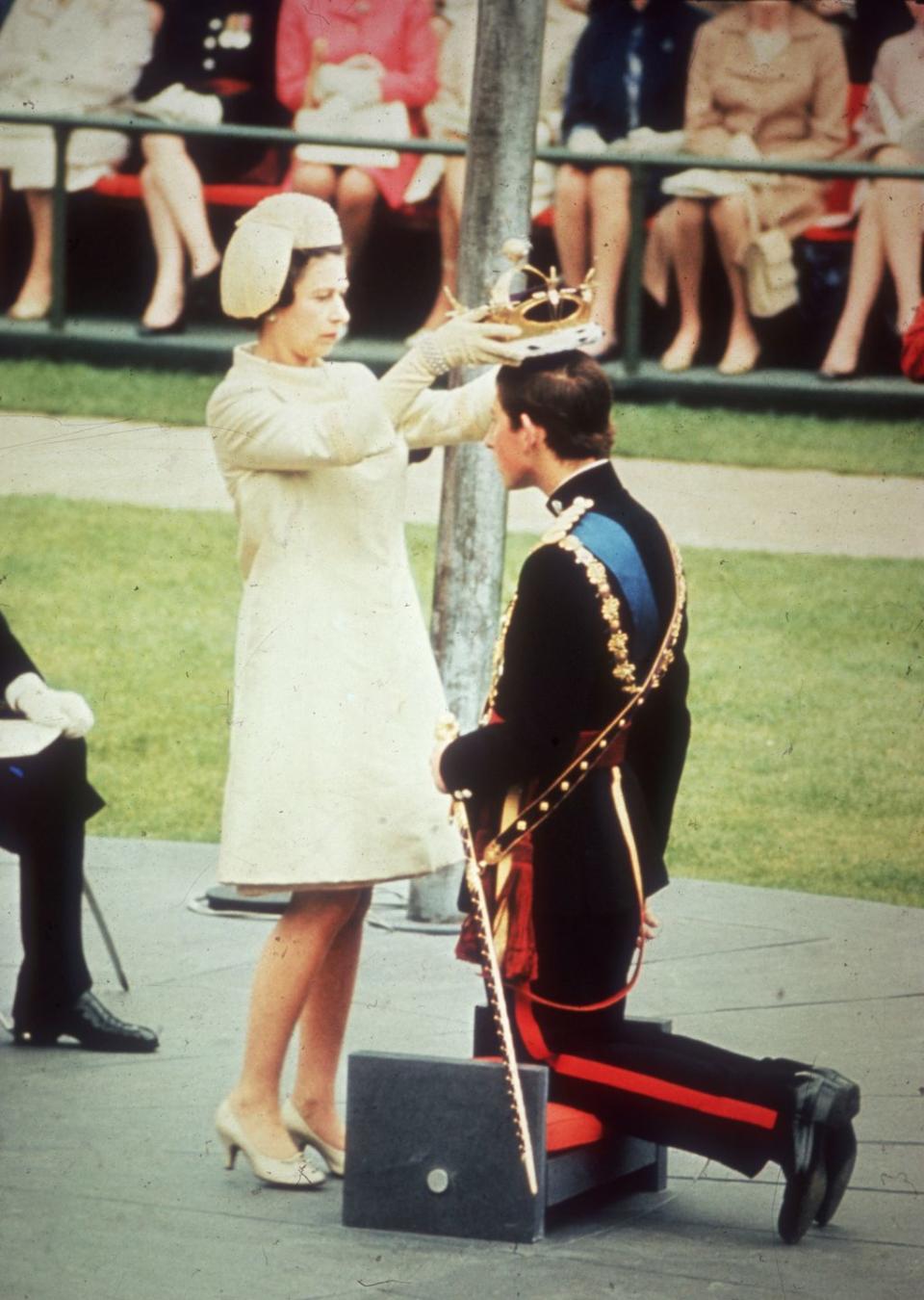
The Sword of Temporal Justice
The Sword of Temporal Justice, which signifies the monarch’s role as head of the Armed Forces, includes a steel blade tapered into a leaf-shaped point, a gilt-iron hilt with a wooden and wire-bound grip, and a velvet-covered leather scabbard. It is one of three swords made for the 1626 coronation of King Charles I. During the coronation procession, the three swords are carried unsheathed and pointing upwards.
The Sword of Spiritual Justice
The Sword of Spiritual Justice, which signifies the monarch as defender of the faith, is the second of the three swords made for Charles I's coronation. It includes a steel blade with a marker's mark at the top, a gilt-iron hilt with a wooden and wire-bound grip, and a velvet-covered scabbard.
The Sword of Mercy or Curtana
The Sword of Mercy, which symbolizes the sovereign's mercy, is the third sword made for Charles I's coronation. It also features a steel blade, a gilt-iron hilt, and a velvet-covered scabbard.
The Sword of Offering
The Sword of Offering, which was made in 1820 and first used at the coronation of King George IV, includes a steel blade mounted in gold and set with jewels, as well as a gold-covered leather scabbard. It was first used at the 1821 coronation of King George IV.
St Edward's Staff
The original staff was thought to have once belonged to St Edward the Confessor, and has since been recreated in 1660, though its original purpose is no longer remembered. It features a tapering gold rod with decorative designs along the staff, topped with a cross above and a steel pike at the bottom.
Spurs
The spurs that will be in use during the May 6 coronation were originally made in 1661 for Charles II. They are made of gold, leather, and velvet, and are meant to symbolize knighthood.
Armills
Two gold bracelets, called the Armills, will be placed on the king's wrists during the May 6 coronation. Meant to be ancient symbols of knighthood and military leadership, these armills were made for the 1953 coronation of Queen Elizabeth II, replacing the previous 17th century-era armills.
The Sovereign's Orb
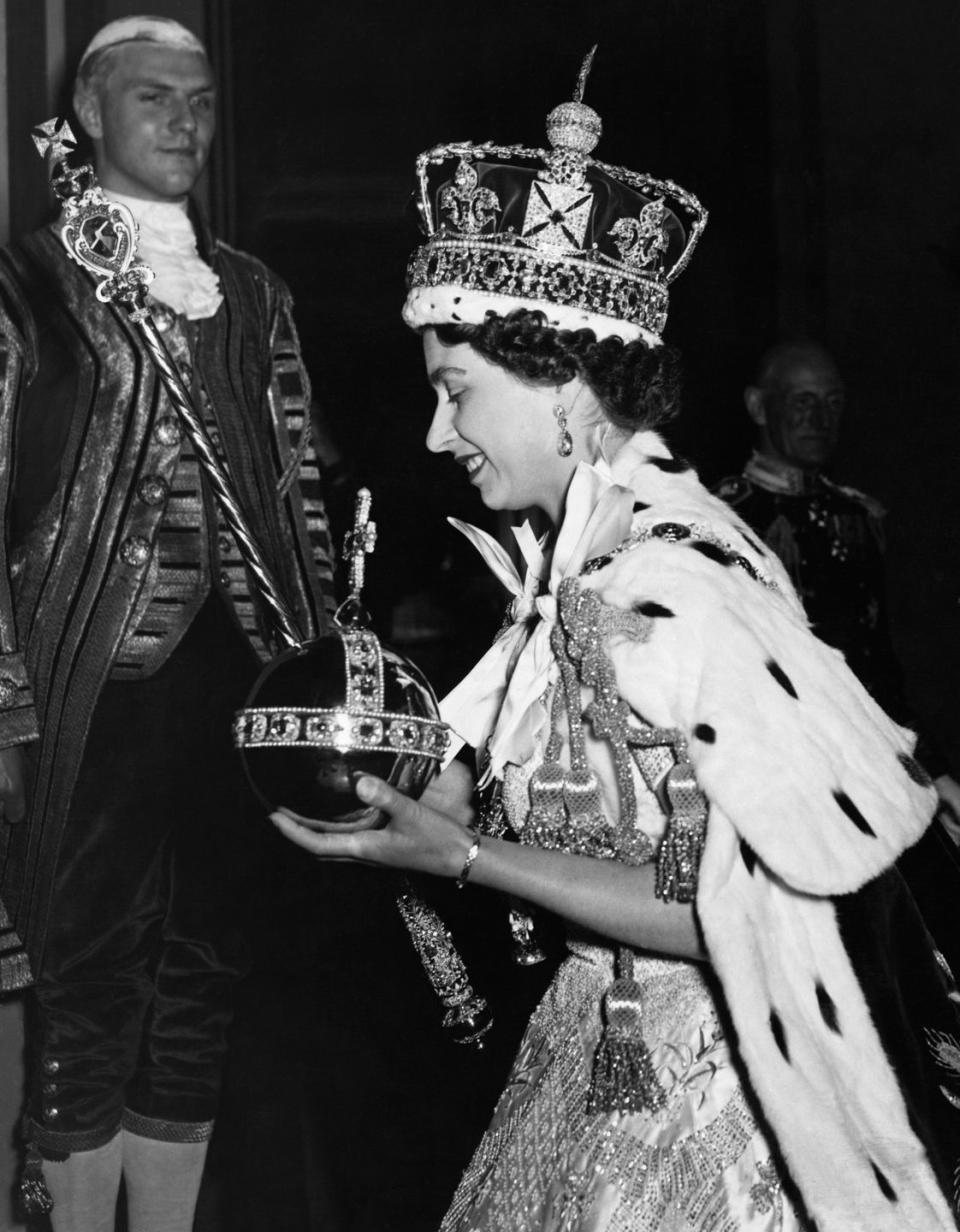
This golden, 17th century-era orb is divided into three sections by jewel-encrusted bands, representing the three continents known during the medieval era. It includes several emeralds, rubies, sapphires, diamonds, and pearls.
The Sovereign's Ring
The Archbishop of Canterbury will place The Sovereign's Ring on the monarch's fourth finger during the coronation ceremony. Until the 20th century, every monarch had a newly-made ring for their coronation. This specific ring was made for William IV's 1831 coronation, who later bequeathed it to his widow, Queen Adelaide, who then bequeathed it to Queen Victoria. Every monarch has used William IV's coronation ring since King Edward VII's 1902 coronation and onwards.
A jewelry expert from Steven Stone estimates that the ring costs about £350,000, or about $440,000.
The Sceptres
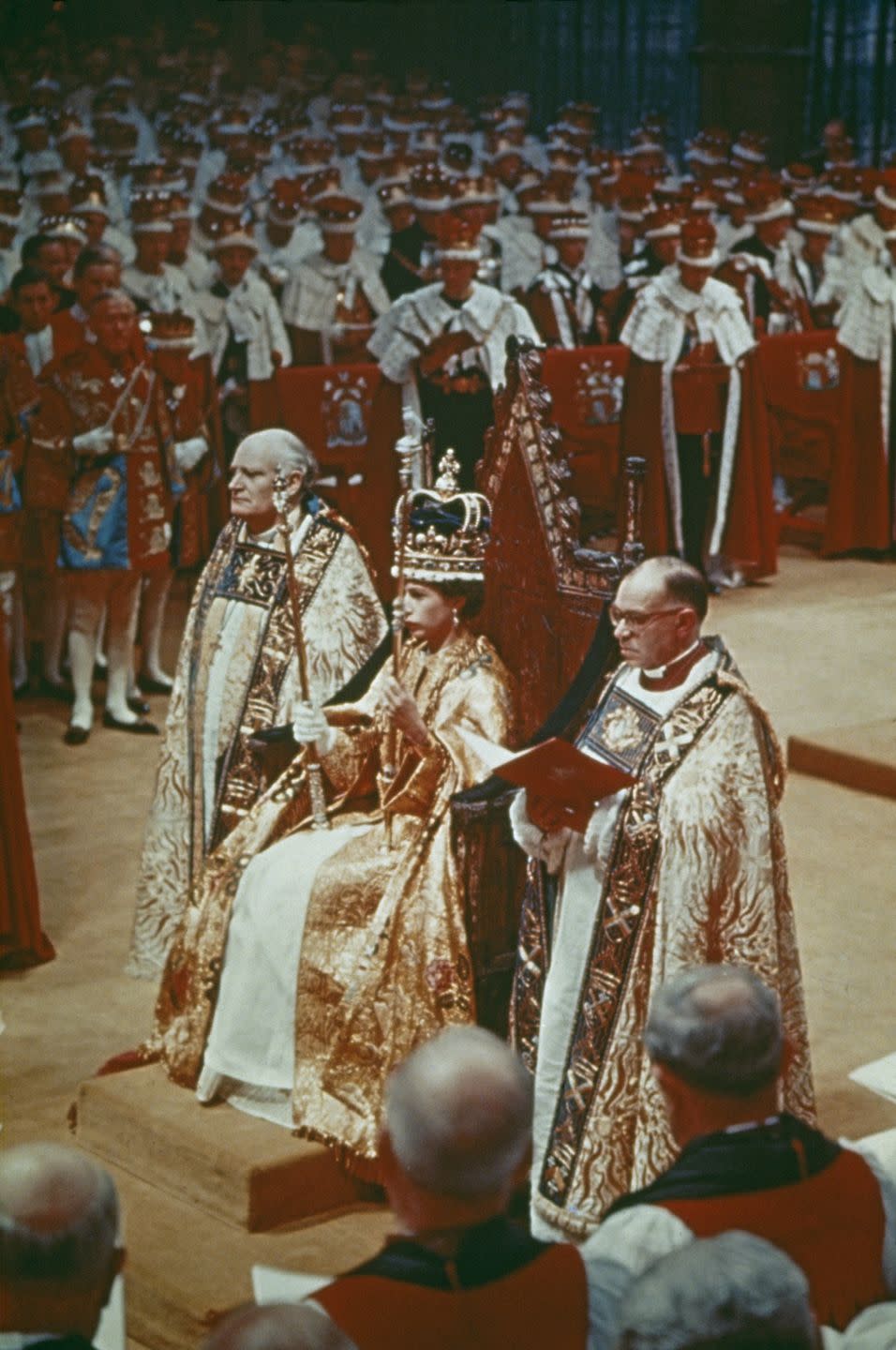
The Sovereign's Sceptre with Cross
The Sovereign’s Sceptre with Cross symbolizes the monarch's temporal power. Originally made for Charles II, it includes a gold rod surmounted by an enamelled heart-shaped structure. In 1910, the controversial Cullinan I diamond—which, to many, has come to represent the violent colonial legacy of the British empire—was added.
The Sovereign's Sceptre with Dove
The Sovereign’s Sceptre with Dove, made in 1661, symbolizes the monarch's spiritual role. It includes a gold, jewel-encrusted rod topped with an enamelled dove, which represents the Holy Ghost.
St Edward's Crown
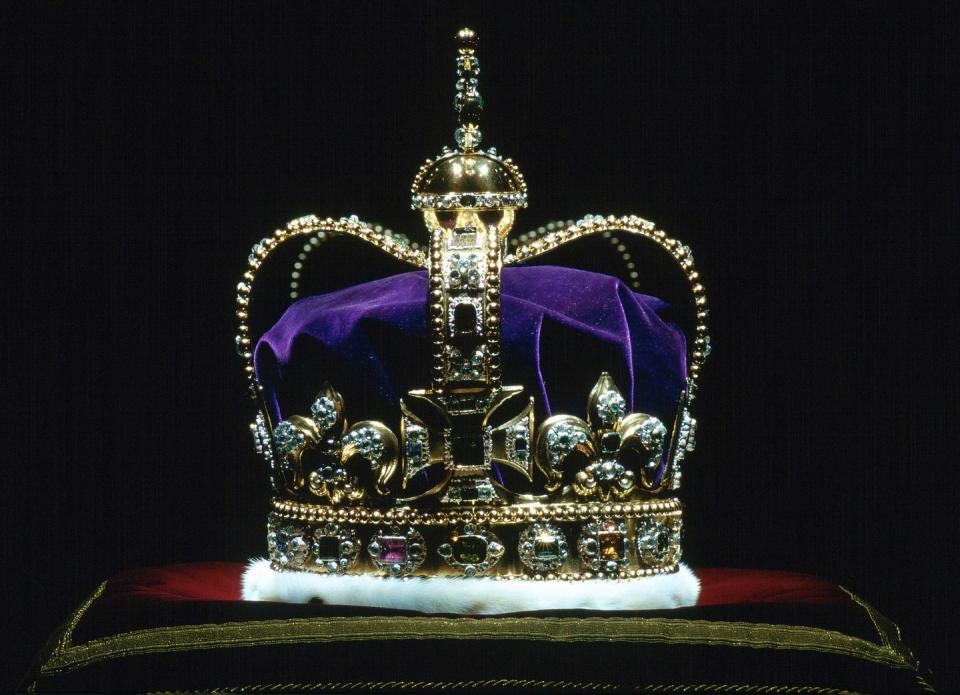
King Charles will be crowned with St Edward's Crown, which has traditionally been used as the coronation crown since the 17th century. The headpiece was made for King Charles II in 1661 and was intended as a replacement for the original medieval crown, which was melted in 1649.
St Edward's Crown imitates the original design by including four crosses-pattée, four fleurs-de-lis, and two arches. The crown additionally includes a deep purple velvet cap, an ermine band, an orb and cross topper, a solid gold frame, and plenty of gems such as rubies, amethysts, sapphires, garnet, topazes, and tourmalines.
The Imperial State Crown
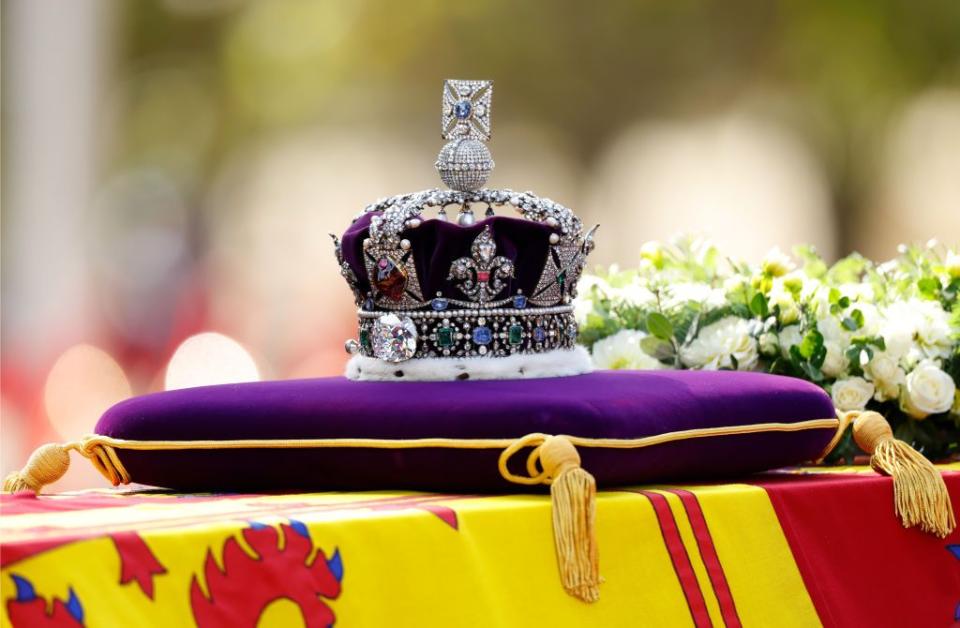
After the coronation service, the king will swap St Edward's Crown for the Imperial State Crown, which he will wear while exiting Westminster Abbey. This specific crown was last seen placed atop Queen Elizabeth's coffin during her funeral last September.
The headpiece, which was made for King George VI's coronation in 1937, includes an openwork gold frame mounted with three large stones and set with 2,868 diamonds in silver mounts as well as 17 sapphires, 11 emeralds, and 269 pearls in gold mounts. It also features a fitted purple velvet cap and an ermine band.
The Imperial State Crown features the controversial Cullinan II, also known as the Second Star of Africa, which was mined in South Africa in 1905 and subsequently forced over to the British royal family. In the decades since, the Cullinan II and its sister stones have sparked calls for the royal family to return the diamonds to South Africa as more and more people criticize their role in plundering colonized lands.
Queen Mary's Crown
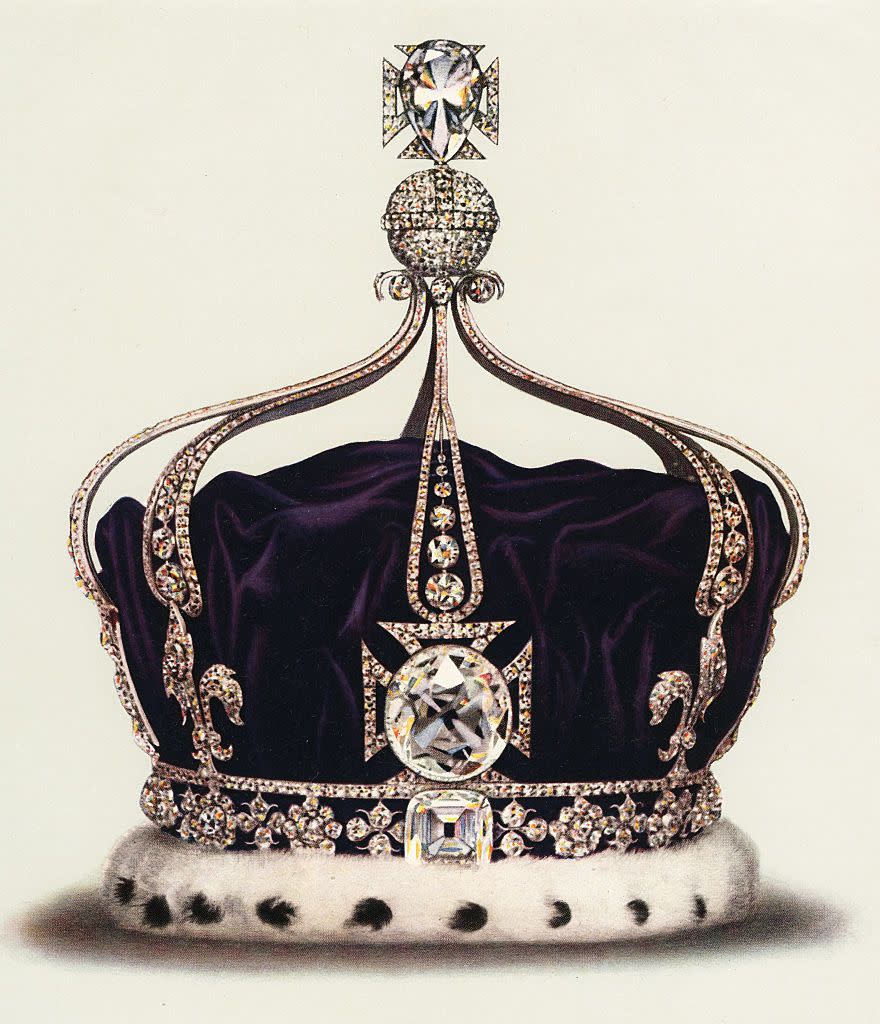
Camilla will be crowned with Queen Mary's Crown, marking the first time in recent history that an existing crown will be reused for the coronation of the consort rather than having a new crown made, according to Buckingham Palace.
Ahead of the coronation, the crown will be reset without the contentious Kohinoor diamond—whose origin is disputed, but has nonetheless come to symbolize the British royal family's violent colonial rule over India—and replaced with the Cullinan III, IV, and V diamonds, a choice made to pay tribute to the late Queen Elizabeth II, as these diamonds hailed from her personal jewelry collection. Still, the swap has incited criticism from many historians and activists, who have noted that the Cullinan diamonds were mined from South Africa and are therefore still relics of British imperialism.
The crown was originally made for the 1911 coronation of Queen Mary, the consort of King George V.
The Queen Consort's Ring
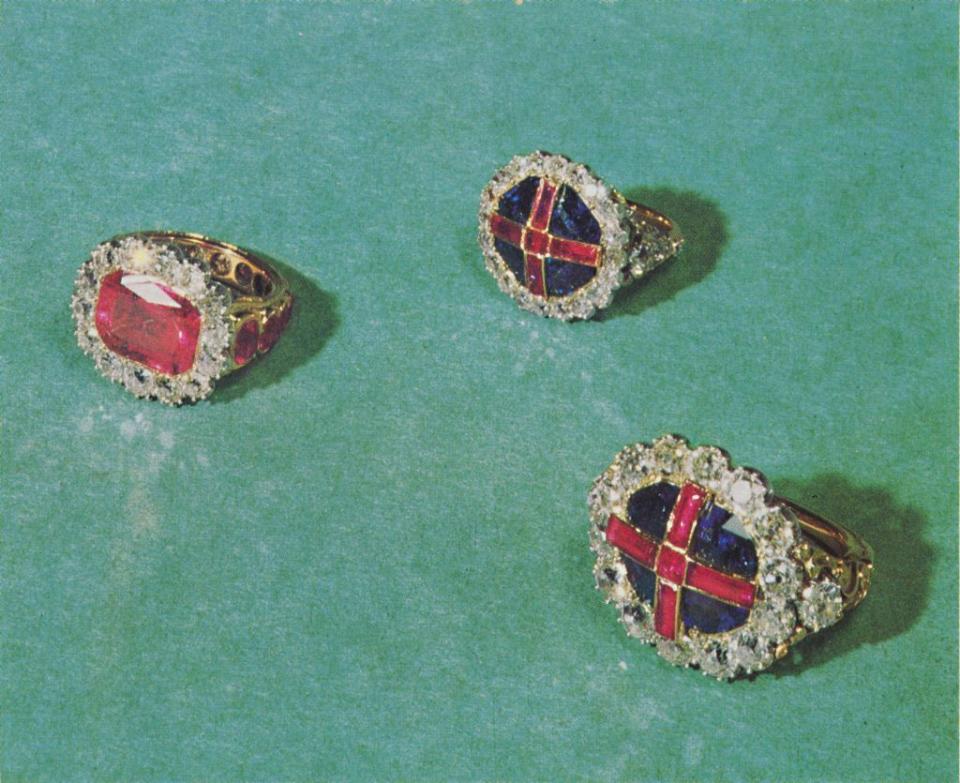
During the coronation of Queen Camilla, the Archbishop of Canterbury will place The Queen Consort's Ring on Her Majesty's finger. This piece of jewelry, which was originally made for Queen Adelaide in 1831, features an octagonal mixed-cut ruby in a gold setting and bordered by 14 cushion-shaped brilliants, plus 14 graduated mixed-cut rubies set on the gold shank. Since Queen Adelaide, three other queens consort have been presented with the ring: Queen Alexandra, Queen Mary, and Queen Elizabeth The Queen Mother.
A jewelry expert from Steven Stone estimates that the Queen Consort's Ring costs about £400,000, or $500,000. That's at least £50,000 (about $60,000) more than the ring Charles will wear during the service.
The Queen Consort’s Rod with Dove
This 1685 piece, which mirrors The Sovereign's Sceptre with Dove, is intended to symbolize equity and mercy," with the folded winged dove topper representing the Holy Ghost. It is comprised of an ivory rod, joined by gold collars chased with acanthus leaves, surmounted by a gold monde enamelled with the national emblems and a cross.
The Queen Consort’s Sceptre with Cross
The Queen Consort's Sceptre with Cross was made in 1685 for the coronation of Queen Mary, the consort of King James II. The original design included diamonds and precious stones, but was later replaced with rock crystals. The three sections of the gold rod are joined by collars mounted by rose-cut stones. Its topper features a monde set amid quartz-set petals, as well as a cross with rose-cut and shaped quartzes.
You Might Also Like

